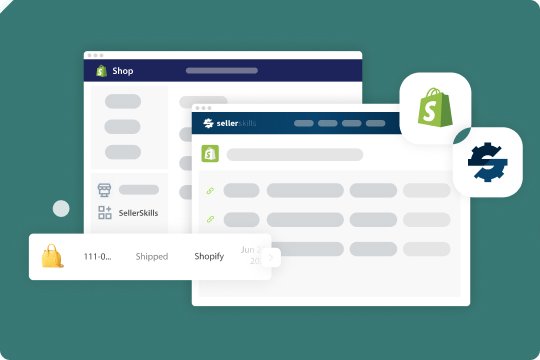As an e-commerce business owner, you already know that managing a single online store is challenging enough. Now, imagine scaling that up to multiple stores on different platforms—each with its own set of rules, requirements, and customer expectations. Here are some of the common challenges you might face:
- Inventory Management: Keeping track of inventory across multiple platforms can be a logistical nightmare. Without proper synchronization, you might oversell products or struggle with stockouts, leading to unhappy customers.
- Order Fulfillment: Processing orders from different platforms manually can be time-consuming and prone to errors. It’s easy to lose track of orders, leading to delays and customer dissatisfaction.
- Product Listing Management: Managing product listings across platforms like Amazon, Walmart, and Shopify requires constant attention to detail. You need to ensure that product descriptions, images, and pricing are consistent across all channels.
- Marketplace Compliance: Each platform has its own rules and regulations. Ensuring compliance with Amazon’s and Walmart’s standards while maintaining your Shopify store can be overwhelming.
Multi-Channel Inventory Management Made Easy with SellerSkills
One of the most significant challenges of running multiple online stores is managing inventory across channels. Without proper synchronization, you risk overselling products that are out of stock, leading to unhappy customers and potential penalties from marketplaces like Amazon and Walmart. SellerSkills offers robust multi-channel inventory management, allowing you to:
- Sync Inventory Across All Channels: SellerSkills ensures that your inventory is automatically updated across Shopify, Amazon, and Walmart, reducing the risk of overselling or running out of stock. For example, if a product sells on Amazon, the inventory levels are instantly updated on Shopify and Walmart, ensuring that your stock levels are always accurate.
- Automate Repricing: Keep your prices competitive by automatically adjusting them based on market trends and competition. This feature helps you stay ahead of your competitors without the need for constant manual adjustments. For example, if a competitor drops their price on Amazon, SellerSkills can automatically adjust your price on both Amazon and Shopify to keep you competitive.
- Centralized Dashboard: Manage all your inventory from one centralized dashboard, giving you complete control and visibility over your stock levels, orders, and listings. This dashboard simplifies the process, allowing you to focus on growing your business rather than getting bogged down in the details.
- Inventory Alerts: SellerSkills provides real-time inventory alerts, notifying you when stock levels are running low. This feature helps you avoid stockouts and ensures that you can reorder products in a timely manner, keeping your business running smoothly.
Streamlining Product Listings Across Platforms
Managing product listings across Shopify, Amazon, and Walmart can be a time-consuming task. SellerSkills simplifies this process by allowing you to:
- Bulk Upload and Edit Listings: With SellerSkills, you can easily upload and edit product listings in bulk. This feature saves you time and ensures consistency across all platforms. For example, if you need to update product descriptions or pricing, you can do so across all platforms in one go.
- Automated Product Categorization: SellerSkills automatically categorizes your products based on marketplace standards. This ensures that your products are listed in the correct categories, increasing visibility and sales potential.
- Image Optimization: Ensure that your product images meet the requirements of each platform. SellerSkills automatically optimizes your images, ensuring they are of high quality and compliant with platform standards.
Seamless Shopify Integration with Amazon and Walmart
SellerSkills provides seamless Shopify integration with your Amazon and Walmart stores. This means you can manage your products, inventory, and orders from all three platforms in one place, saving you time and effort. Here’s how SellerSkills makes Shopify integration a breeze:
Amazon Shopify Integration
Integrating your Amazon store with Shopify through SellerSkills allows you to import your Amazon product listings directly into Shopify. You can manage product details, pricing, and inventory from one platform, ensuring consistency across your channels. SellerSkills also handles order fulfillment, automatically syncing orders from Shopify back to Amazon for processing. Additionally, SellerSkills enables you to:
- Manage FBA and FBM Orders: Whether you’re using Fulfillment by Amazon (FBA) or Fulfillment by Merchant (FBM), SellerSkills ensures that your orders are processed efficiently. You can track orders, manage shipping, and handle returns, all from one platform.
- Amazon Product Compliance: SellerSkills ensures that your product listings meet Amazon’s strict compliance standards. This reduces the risk of account suspension or listing removal due to non-compliance.
Walmart Shopify Integration
Wondering how to connect Walmart to Shopify? The best way is with SellerSkills. With SellerSkills, you can easily import your Walmart product listings into Shopify, manage inventory in real-time, and ensure that your Walmart and Shopify stores are always in sync. This integration streamlines the entire process, making it simple to run your Walmart and Shopify stores simultaneously. SellerSkills also offers:
- Automated Order Syncing: Orders placed on Walmart are automatically synced with Shopify, allowing you to manage fulfillment from one central platform. This reduces the risk of missed or delayed orders.
- Walmart Compliance: SellerSkills ensures that your product listings meet Walmart’s requirements, helping you avoid potential penalties or listing removals.
- Pricing Consistency: SellerSkills helps you maintain consistent pricing across Walmart and Shopify, reducing the risk of pricing errors that could lead to customer complaints or penalties.
